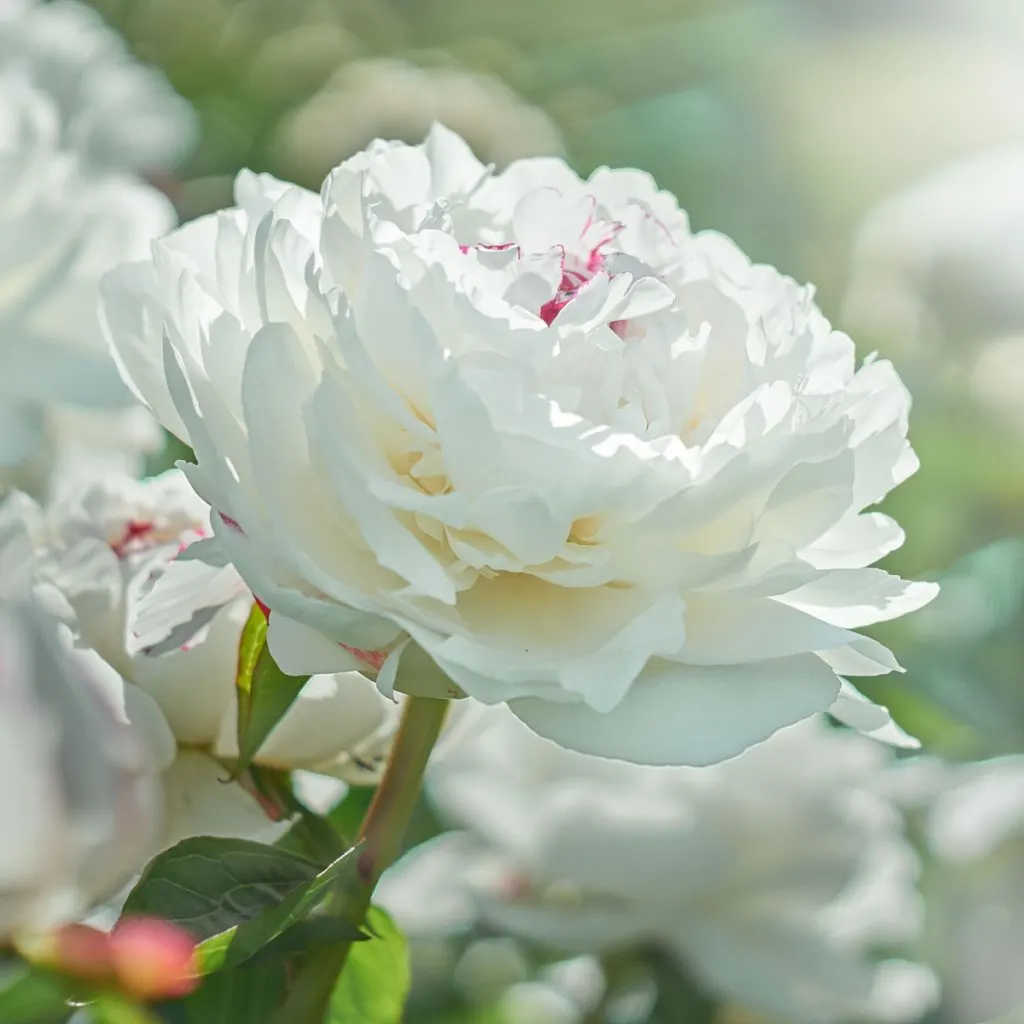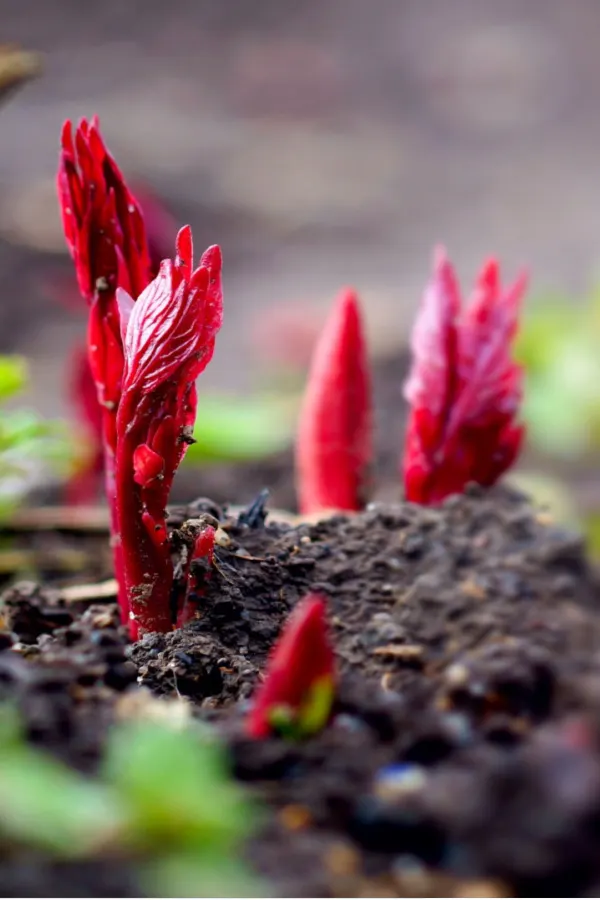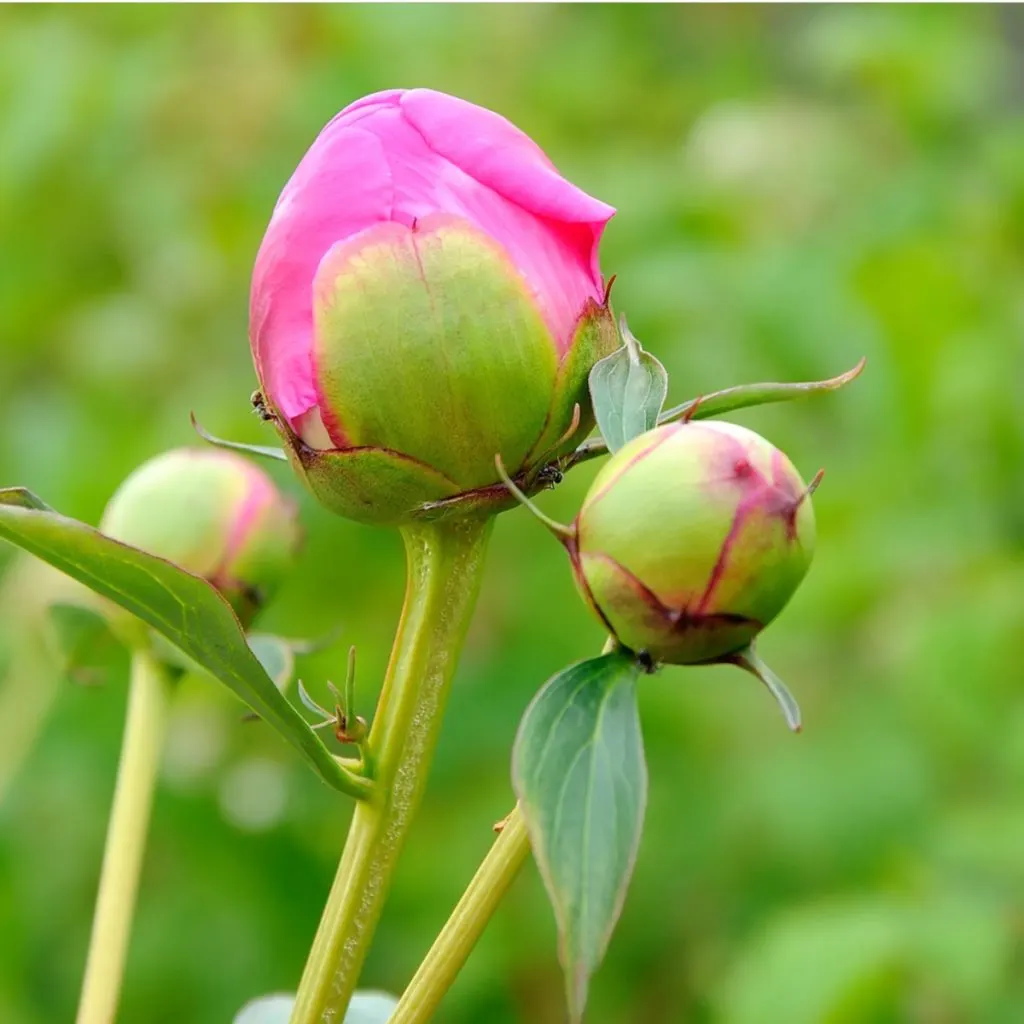Looking for the best way to fertilize your peony bushes early this spring to get them to bloom bigger and brighter than ever?
Peonies are one of the first perennial bushes of all to come into bloom in the spring. And one thing is for sure – their fragrant, colorful flowers are a welcome sight after enduring a long, dreary winter. Especially when you consider just how much color their huge blooms can bring to a landscape!
But when it comes to getting peonies to bloom big year after year – there are a few key chores than can make a big difference between flowering success, or a lackluster blooming performance. And as it turns out, one of the most important of all is to fertilize them at just the right time – with just the right dose of nutrients!

As you will see below, there are actually two separate key times to fertilize your peonies. The first is in late winter to early spring right before or just as peonies sprout from the soil. The second critical time to fertilize is right after they bloom.
Both are important, but for very different reasons. Of the two, the first helps more with storing energy for the upcoming spring’s flower set. Meanwhile, the second application is vital for helping the bush recover after using loads of energy to flower.
Sound complicated? It’s actually not! With easy blooming success in mind, here is a look at how, when and what to use to fertilize peonies – and how to get the most blooms possible from them as well!
The Best Way To Fertilize Peony Bushes
Late Winter/ Early Spring Fertilizing
Without a doubt, fertilizing your peonies before or right as they begin to sprout is vital for helping the bush push out big spring blooms. To be most helpful for blooming, it’s important to get this feeding down before the peony leafs out.
By giving your peony bush an early dose of nutrients, it allows it to store energy specifically for producing flowers. At this point, with no leaves out, the nutrients absorb into the plants roots to specifically help develop buds.

Unfortunately, if the dose of fertilizer is given too late in the spring after the foliage is completely out, it will instead use that energy to maintain its leaves and branch structure. It’s not that late power will harm your peony, it just won’t help in the least with this year’s flowering.
The Best Fertilizer For Peonies In Late Winter / Early Spring
Now that we know when to fertilize, what is the best choice of product to give your peonies the power they need?
For strong blooming, peonies need calcium and phosphorous more than anything else. They also require a bit of nitrogen to help power strong plant growth, but for the actual flowering process – it’s calcium and phosphorous that are front and center.
Although you could use a standard granular fertilizer to feed your peonies, the best choice of all to energize them for blooming is bone meal. Bone meal not only contains nitrogen, it also happens to be overflowing with phosphorous and calcium. Affiliate Link: Organic Bone Meal Fertilizer
Beyond having the right nutrient mix to fertilize peony bushes, bone meal also happens to be extremely easy for peonies to soak into their root structure. And that quick absorption is critical to absorb into the bush in time to help with the upcoming bloom.

As for how much bone meal to use, a good rule of thumb is to apply 1 cup of bone meal for an average size peony bush. If your peonies happen to be extremely large, a second cup may be necessary. To apply, first pull back any mulch that may be around or over the crowns of your plant. Next, simply sprinkle the bone meal around the clump of the crown.
Once the bone meal is down, water your plant to allow the fertilizer to start soaking in fast. Once you have watered it in, you can then replace the mulch back over top. Spring feeding really is that simple!
Post Bloom Fertilizing – The Best Way To Fertilize Peony Bushes
As soon as your peonies complete their flowering show in late spring, it’s time to power them up one last time. This feeding may not help this year’s blooms, but it will help the plant recover valuable energy – and help it to have strong foliage growth for the remainder of the year.
Not only is that important to keep your peonies looking their best, that strong foliage growth also allows the plant to use photosynthesis to start storing energy back into its roots as well. This helps the plant prepare for winter, and for blooming again next year.

Deadheading & Fertilizing Peonies In Early Summer
Before fertilizing again, it’s best to first deadhead all of the spent and dying blooms and stems from your peony bush. These are not only unsightly, but drain unnecessary energy from the plant. In fact, as long as they remain, they steal nutrients from the bush as it keeps trying to heal them.
Of course, once a peony bloom is finished blooming, no amount of nutrients can help it. And that is exactly why it’s important to prune the old blooms from the plant quickly. The minute you do, you stop the plant from wasting any energy on attempting to care or heal for the dying and decaying blooms.
Once you have deadheaded the blooms, it’s time to once again turn to bone meal. This time, the feeding can be a bit lighter. For the 2nd feeding, use 1/2 cup for an average size peony and a full cup for large bushes.
Again, pull back any existing mulch before fertilizing. Apply the fertilizer around the base of the plant and water in. Put the protective mulch layer back in place and your peonies are powered for the year. All that is left is to cut your peonies back after they die off in late fall. See: Fall Peony Care – What To Do With Peony Bushes Before Winter!
Here is to fertilizing your peony bushes for big blooms – year after year!
This Is My Garden
Follow Our Facebook Page For Great Gardening Tips And Advice! This Is My Garden Facebook Page
This Is My Garden is a garden website created by gardeners, for gardeners. Jim and Mary Competti have been writing gardening, DIY and recipe articles and books and speaking for over 15 years from their 46 acre Ohio farm. They publish three articles every week, 52 weeks a year. Sign up today to follow via email, or follow along!
